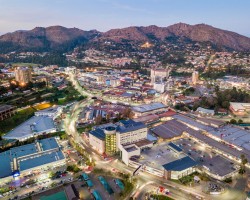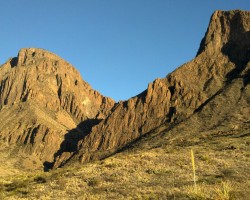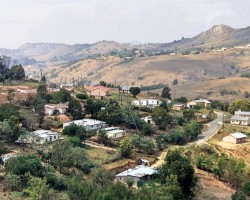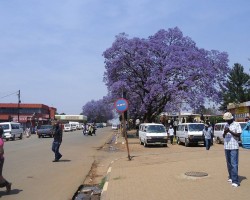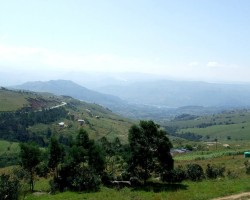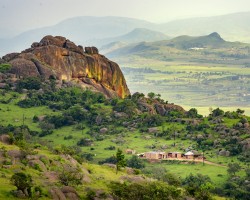Best time to go to Swaziland (Eswatini) for a perfect weather and where to go?
When is the best time to go to Swaziland (Eswatini)?
When is the best time to go to Swaziland (Eswatini)? Here's some information to help you in your decision:
- In Swaziland (Eswatini), the weather is good everywhere in February, March, April, May, August, September, October and November
- The best months to go to Mbabane are February, March, April, May, June, July, August, September, October and November
- On average, the warmest months in Mbabane are January, February, March, September, October, November and December, and the coldest months are June and July
- The rainiest months in this city are January and December
- The cities with the best climate are Mbabane, Big Bend, Manzini, Pigg's Peak and Lobamba, with good weather at least 10 months a year
Where and when to go based on the weather?
Central of Swaziland (Eswatini)
Big Bend, Manzini, Lobamba...
North of Swaziland (Eswatini)
Mbabane, Pigg's Peak...
South of Swaziland (Eswatini)
Nhlangano...
To get all the information about the climate and weather in Swaziland (Eswatini) for a specific month, click on the corresponding link below:
Swaziland (Eswatini) in january Swaziland (Eswatini) in february Swaziland (Eswatini) in march Swaziland (Eswatini) in april Swaziland (Eswatini) in may Swaziland (Eswatini) in june Swaziland (Eswatini) in july Swaziland (Eswatini) in august Swaziland (Eswatini) in september Swaziland (Eswatini) in october Swaziland (Eswatini) in november Swaziland (Eswatini) in december
Best time to travel to Swaziland (Eswatini) by cities
Temperatures and rainfall in Swaziland (Eswatini)
On these 2 graphs, we present the evolution of temperatures of Swaziland (Eswatini) and month-by-month rainfall for the cities of Mbabane, Big Bend, Manzini, Nhlangano and Pigg's Peak.
Peak visitor numbers and tourist seasons in Swaziland (Eswatini)
Find out when Swaziland (Eswatini) has its high tourist season (the period when the influx of tourists is highest) and off-peak tourist season using our data and figures.
Tourist seasons in Swaziland (Eswatini)
The months with low numbers of tourists are: January, February, March, April, June and July. The number of visitors to Swaziland (Eswatini) is high in: May, August, September, October, November and December.
- Very low season in Swaziland (Eswatini): January and June.
- Low season in Swaziland (Eswatini): February, March, April and July.
- High season in Swaziland (Eswatini): May, October and November.
- Peak season in Swaziland (Eswatini): August, September and December.
Figure: Visitor index for Swaziland (Eswatini) month by month
Where to go in Swaziland (Eswatini)?
This table allows you to see the maximum temperature for each city and our opinion on the weather month by month (see colour legend below the table).
| Cities | jan. | feb. | mar. | apr. | may | jun. | jul. | aug. | sep. | oct. | nov. | dec. |
| Mbabane | 26°C | 26°C | 25°C | 23°C | 23°C | 21°C | 20°C | 23°C | 25°C | 25°C | 26°C | 27°C |
| Big Bend | 28°C | 28°C | 28°C | 25°C | 25°C | 23°C | 22°C | 25°C | 27°C | 27°C | 28°C | 29°C |
| Manzini | 28°C | 28°C | 28°C | 25°C | 25°C | 23°C | 22°C | 25°C | 27°C | 27°C | 28°C | 29°C |
| Nhlangano | 26°C | 26°C | 26°C | 23°C | 22°C | 20°C | 20°C | 23°C | 26°C | 26°C | 27°C | 27°C |
| Pigg's Peak | 26°C | 26°C | 25°C | 23°C | 23°C | 21°C | 20°C | 23°C | 25°C | 25°C | 26°C | 27°C |
| Lobamba | 28°C | 28°C | 28°C | 25°C | 25°C | 23°C | 22°C | 25°C | 27°C | 27°C | 28°C | 29°C |
Legend:
perfect weather
good weather
tolerable weather
About Swaziland (Eswatini)
What can I do in Swaziland (Eswatini)?
Beaches / swimming
Nature and countryside
Culture and heritage
Sports
Family travel
Crafts / shopping
Gastronomy
Nightlife
Is this weather information for Swaziland (Eswatini) reliable?
Climate data for Swaziland (Eswatini) has been gathered every day since January 2009. The analysis of these meteorological data for Swaziland (Eswatini) allows us to determine the average for each month in Mbabane, Big Bend, Manzini, Nhlangano, Pigg's Peak and Lobamba.
So yes: this data is reliable except in cases of temporary climate disruption in the region.
